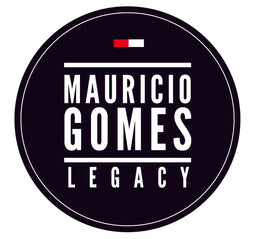If you train in a grappling art, such as Brazilian Jiu Jitsu or wrestling, the chances are that you know many people with cauliflower ears and that you may even have one yourself.
Cauliflower ears are nothing new and combat athletes have suffered from this ailment for millennia. The famous statue of the ‘Boxer at Rest’ from ancient Greece nicely demonstrates an example of this and dates back over 2300 years.

What is a cauliflower ear?
Cauliflower ear is one of the most common facial injuries suffered and is particularly prevalent in grapplers. It occurs when the outer portion of the ear (the pinna or auricle) is struck causing the dense connective tissue within the ear (the perichondrium) to separate from the underlying cartilage. Small blood vessels are situated in this area and these proceed to bleed causing the area to swell and become deformed.
If left untreated a large blood clot will form, called an auricular haematoma. This haematoma stimulates the production of new cartilage, and it is only once this deformed cartilage has developed that the injury is referred to as a cauliflower ear.
Cauliflower ears are often considered to be a ‘badge of honour’ amongst grapplers and combat sports athletes but they are associated with several potential problems and medical complications, and should ideally be treated quickly to prevent these from occurring.
Apart from being unsightly, they can be prone to infection, and painful inflammation of the cartilage, called chondritis, can occur. Severe cases can cause the ear canal to become blocked, which can affect hearing and I have one friend that is no longer able to wear earbud headphones because of his. Once you have an established cauliflower ear they are also more prone to developing another haematoma or further damage. This can be very dramatic on occasion, as anyone that watched Leslie Smith’s fight at UFC 118 will attest to!
Prevention is better than cure
There is an old adage in medicine that ‘prevention is better than cure’, and this is particularly true for cauliflower ears. The easiest way to prevent a cauliflower ear is to wear headgear or earguards. These will effectively protect the ear from the blunt shearing forces that typically cause the haematoma to form. It is worth mentioning that some competitions do not allow these to be worn and some athletes find them too cumbersome or uncomfortable to wear.
If you are in a situation where the wearing of earguards is not permitted or simply prefer not to wear them at all try to develop an awareness of where your head and ears are whilst grappling. For example, if you are caught in a tight guillotine or triangle and can feel intense pressure on the ear then don't try to just rip your head out of the position using brute force. If you are just rolling with a friend in a non-competitive match ask them to readjust without changing the position too much. If the situation is extreme and the ear is being severely compressed you always have the option to tap and save yourself a trip to the Emergency Department to get it drained!
How are cauliflower ears treated?
There are a large number of articles and videos online showing how to self treat an auricular haematoma that has developed. As a doctor, I would, however, strongly advise against self-treatment due to the associated risks. It is far better to get the procedure performed in a sterile setting by an experienced professional than do a botch job at home and risk the haematoma just re-accumulating, or even worse a serious infection developing.
One simple measure that can be used prior to getting medical advice is to apply ice to the area. This can lessen the swelling prior to the drainage being performed. The ear is relatively avascular though and ice should not be left on for long periods of time.
The sooner that help can be sought the better, and the process of draining the haematoma itself is relatively simple. The ear should be thoroughly cleaned before the procedure is commenced to minimize the risk of infection. A fine-bore needle will then be inserted into the ear and the blood drained. This may require several aspirations and if the haematoma is large a small incision is also sometimes required.
This excellent video by Stuart Cooper shows Roberto ‘Cyborg’ Abreu having his ear being drained in the run-up to the ADCC tournament.
After the ear has been drained, compression bandaging will need to be applied or a small ‘sponge button’ sutured onto the area that has been drained. If this is not done blood will simply re-accumulate and the ear will need to be drained again. Sometimes a doctor will prescribe antibiotics if they are concerned about potential infection. Another novel way of preventing re-accumulation is the CauliCure magnet system, which is shown in this video:
After the procedure, the ear should be kept dry and clean until the area has settled down and healed. Further trauma should be avoided to prevent worsening the damage and developing an infection. Once new cartilage has been established and a true cauliflower ear has developed the ear will not be able to be drained in this way. At this point, the only option available is expensive plastic surgery. It is, therefore, a far better option to get the haematoma drained as soon as possible following the incident that caused it.
------------------------------------------------------------------------------------------------
This article was written by Mauricio's student Marc Barton, who is the head instructor at his affiliated academy Kingston Jiu Jitsu. Marc has also contributed educational articles for a medical education website.
